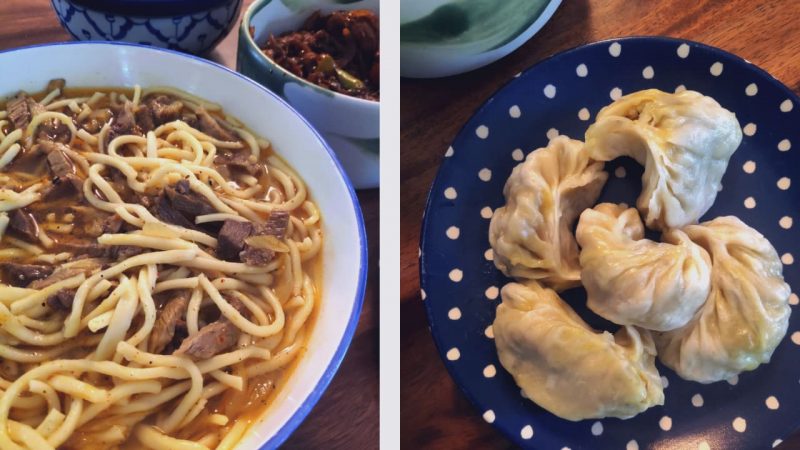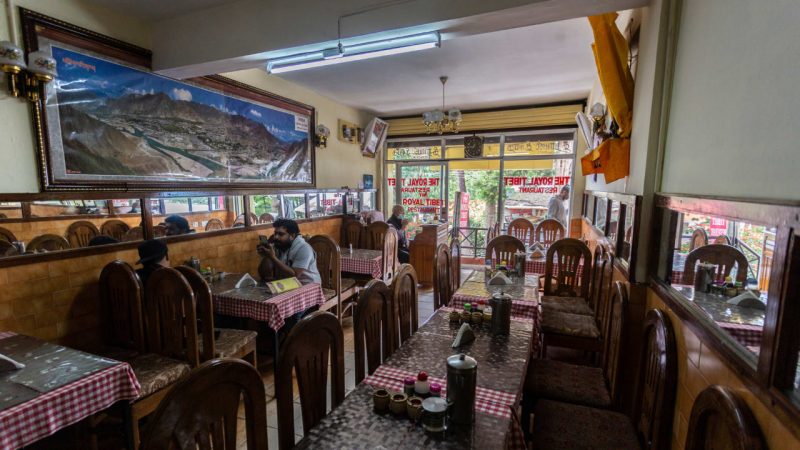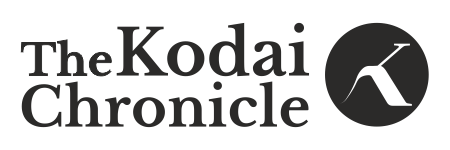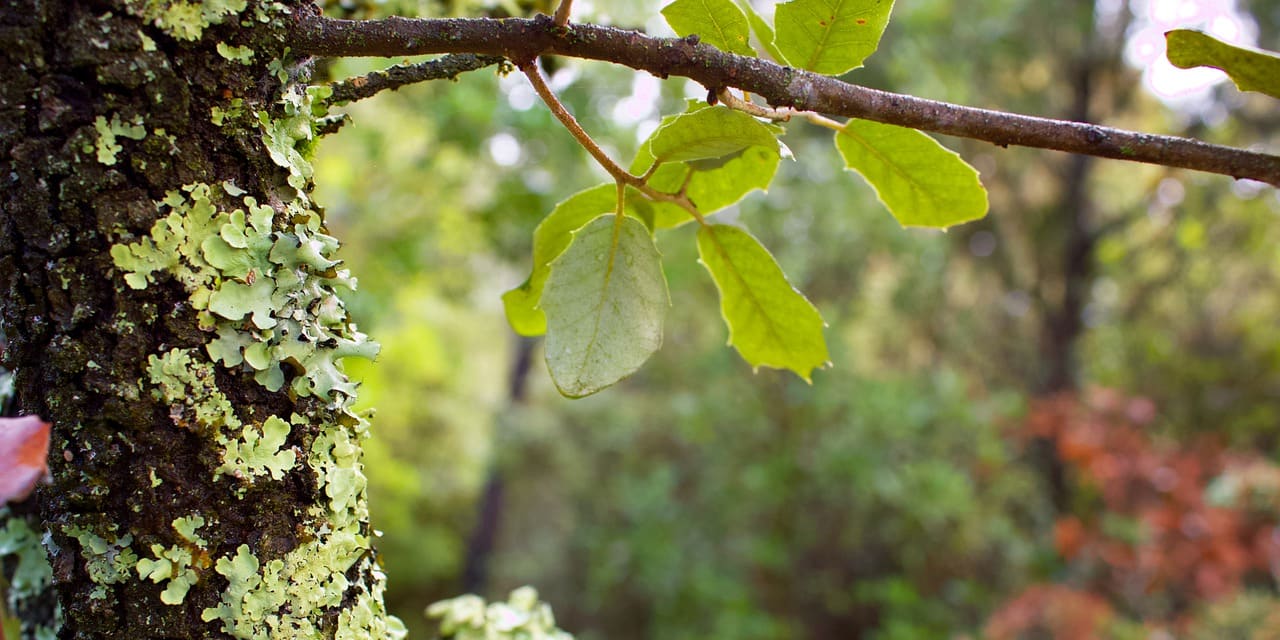Growing up in Tibet, way back in the 1950s, thirteen-year-old Ngawang Dorjee had never tasted a fried chicken momo. In the district of Nangpa, close to the Nepal border, where he lived, the dumplings were stuffed with yak or goat meat, and always steamed. Nor did he imagine that he would one day set up a restaurant serving Tibetan food in a small-town called Kodaikanal in south India, so far away from home.
Dorjee and his elder cousin, Tashi Namgyal, were among those who had to flee their country due to Chinese occupation in 1950 and the Tibetan uprising in 1959. When they fled their homes in 1960, their families walked for three days in the mountainous terrain and sought refuge in Nepal. The possessions they carried included a teapot, tsampa (roasted barley flour used to make porridge), yak butter, and blankets. The yak butter lasted a month, after which the family had to switch to butter from cow’s milk—the first of many changes they made in the years to come.
Today, Ngawang Dorjee, better known as ‘Uncle’ or ‘Uncle Tibbs’, runs an eatery called Tibetan Brothers on PT Road, where he serves a menu of fusion Tibetan food to hungry tourists and locals looking for a warm meal on a cold night. As you open the door of the restaurant, the aroma of chowmein, fried rice, and fried momos fills your nostrils. The furniture is comfortable and weathered, and the walls are filled with posters of the stark landscape of Tibet and the cheerful Dalai Lama—reminders of how much the family misses home. Uncle Tibbs exudes warm hospitality when he hands over the menu card, takes orders and serves at each table, mindful of every request being made.

‘I have been going to Tibbs ever since I was a kid,’ says Liyaqat Khan, a local of Kashmiri origin who has been visiting the restaurant since its inception. ‘We went to the place because we love to eat beef but we don’t cook it at home.’ Beef chilli is among the restaurant’s most popular dishes, but the vegetarians are not left behind, with options of adding vegetables and cheese instead of meat to the momos, chowmein, or rice. ‘When my sister comes to town, we still go there. It’s a part of Kodai,’ Khan says. ‘Earlier this year, my younger son was leaving Kodai during the lockdown and Tibbs hadn’t opened yet—he didn’t want to leave before eating a meal there!’
Many Kodai residents and tourists have tucked into a steaming bowl of thukpa at Tibbs, but few know of the family’s arduous and winding journey from Tibet to Tamil Nadu. For the first two years after they left home, Dorjee tells me, they lived in Narayangarh, a hill-station in Nepal, where the family sold most of their ornaments in return for rice, ragi, and maize. Then, with the help of the Red Cross, the brothers arrived in Pathankot, Himachal Pradesh, by lorry. Children aged up to 15 were sent to school; those above 15 were put in military school and taken into training, and those above 18 were sent to the Indian military. ‘I was put in UKG at the age of 15,’ says 74-year-old Dorjee with a hearty laugh. ‘I learnt some English and Hindi in Mussoorie, then.’

From Pathankot, he went on to Dharamsala, then Calcutta, where he worked in a Tibetan restaurant; next, Kullu Manali, where he laboured to construct roads along with his parents. ‘Then the Government sent us to South India,’ he said, and Dorjee’s family landed up at a Tibetan settlement in Kollegal, Karnataka where he met his wife.
Like many immigrants in Kodaikanal, in Kodaikanal, the brothers were drawn to the region because of the hill station’s fine weather. They had heard about the place from relatives, but it wasn’t until 1982 that Dorjee and his brother, Tashi Namgyal, travelled to Kodaikanal along with their wives. According to Tenzin Kalden, grandson of Tashi, Kodai’s hilly terrain and cool climate reminded them of home, and they decided to set up a restaurant together.
At the time, there were not so many restaurants or buildings, apart from Kodaikanal International School. ‘No tourists and just two taxis in all of Kodaikanal,’ Dorjee says. Investing about Rs 20,000 to buy furniture and kitchen utensils, the brothers started a restaurant that could seat around 20 people.

The menu was basically what they had at home—steamed momos, thukpa and chowmein—customised to suit the Indian palate. For instance, instead of yak meat, the momos were stuffed with chicken and vegetables. Tea was served with lemon and honey, as opposed to yak butter. But the noodles were still handmade every day, by mixing egg with flour, kneading it, and slicing the dough into thin strips. ‘The other day, my friend recollected that a plate of egg chowmein was priced at Rs 5 and chicken chowmein for Rs 7,’ he said. ‘A bowl of thukpa or noodle soup was Rs 5.’
Forty-five-year-old V Arun, a resident of Naidupuram, Kodaikanal, has been visiting the restaurant since 1990. “I visit the restaurant at least once or sometimes twice a month with my family, about 8 of us. We celebrate our birthdays and wedding anniversary by dining here. After my two daughters were born, we go to the restaurant on their birthdays,” he says.
The brothers ran the restaurant together until 1994, when Tashi Namgyal and his wife Chokay set up a separate restaurant called Royal Tibet, at a first floor location, also on PT Road. Chokay manages the kitchen, while Namgyal sits behind the counter. There has always been sufficient business for both establishments, especially on weekends when children from the town’s boarding schools come to town for a break.

Kodaikanal is home to a small community of Tibetans. According to Kalden, grandson of Tashi, there are around 15 families in the hill station. Some manage shops selling sweaters and blankets at the Tibetan market, located close to the Kodaikanal Lake on land leased by the municipality. ‘We are a close-knit community, gathering every Wednesday for prayer meets as this is considered as a lucky day for His Holiness the Dalai Lama,’ he said. ‘To show solidarity for Tibet, we wear traditional Tibetan clothes, eat Tibetan food, speak our language and pray for his Holiness to live a long life.’ Even now, he says, members of the older generation do not collect too many possessions as they would like to leave, when it is possible to return home.

Much has changed since the brothers Dorjee and Namgyal first came to Kodaikanal. ‘Today, you can get momos everywhere, even around the lake,’ says Dorjee. The tourist crowds have increased, schools are now restricting the students’ visits to town, but ‘Still, sometimes, the children would ask permission to buy a book and sneak in a visit to the restaurant.’
Both restaurants, Tibetan Brothers and Royal Tibet, are open from noon to 9 pm, throughout the year, except during Losar, or the Tibetan New Year, which is celebrated in February or March, according to the Tibetan Calendar. ‘I thought that I would stay here for two or three years,’ says Dorjee. ‘Now, it has been over 40 years.’
– With inputs from Darshana Ramdev
Quickie Recipe: Tibbs’ Famous Garlic Sauce
Ingredients:
Garlic + red chillies + salt + oil + vinegar
Add a handful of each ingredient to the mixie.
Grind, taste, and voila, garlic sauce is ready.
The ingredients are ground raw, with quantities adjusted to one’s preference.
Quickie Recipe: Tibbs’ Tibetan Bread
Ingredients:
Flour, water, salt, and a pinch of baking powder.
Mix all the ingredients. Set aside for 30 minutes.
Heat oil for deep frying.
Roll out bits of the mix like you would a chapati, make two slits in the centre, and deep fry it to get fluffy Tibetan bread.




